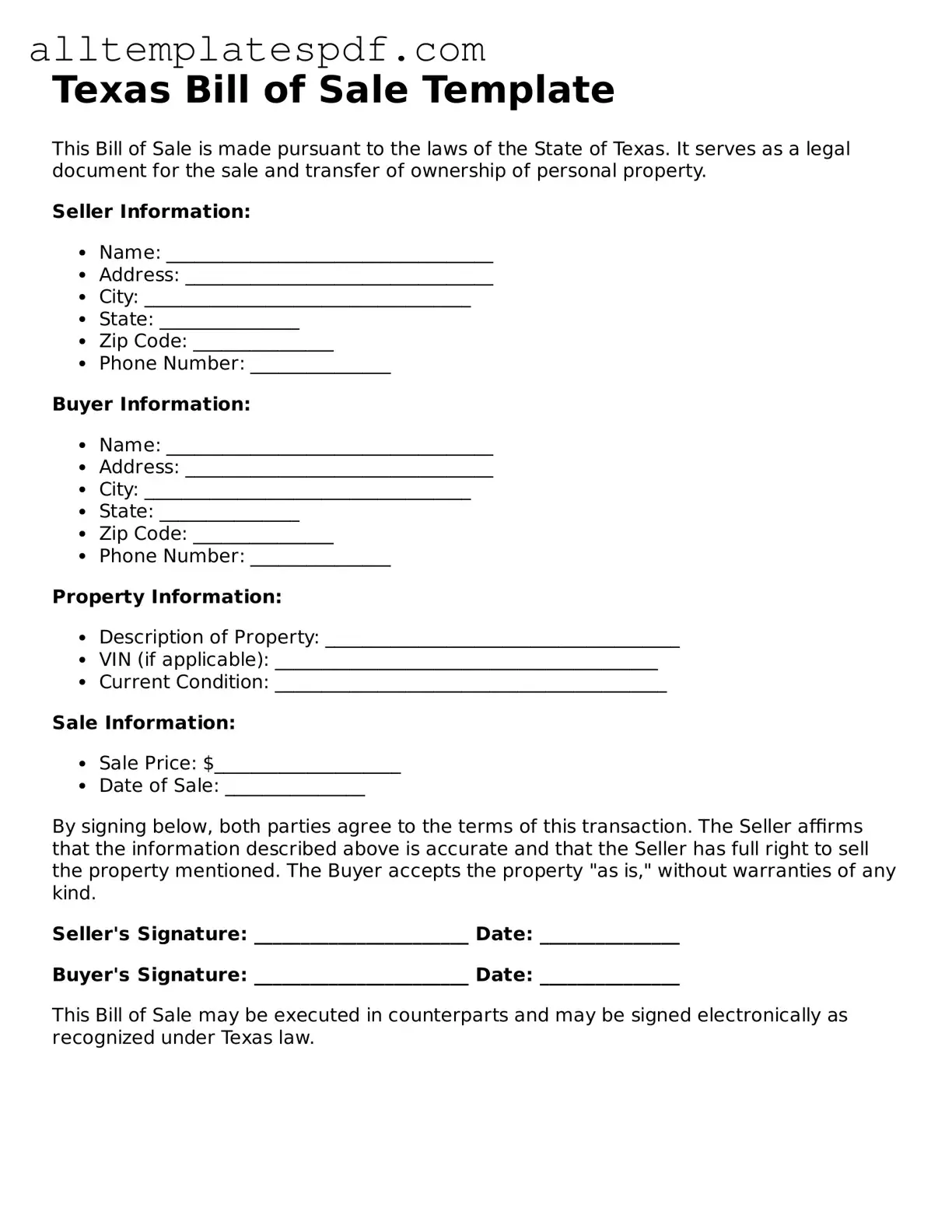When filling out the Texas Bill of Sale form, many people make common mistakes that can lead to complications down the line. One frequent error is failing to include all necessary information. The form requires details about the buyer, seller, and the item being sold. Omitting even one piece of information can render the document incomplete.
Another mistake is incorrect item description. The Bill of Sale must accurately describe the item, including its make, model, year, and identification numbers. A vague description can create confusion and disputes later, especially if the item has multiple similar versions.
Many individuals also overlook the importance of signatures. Both the buyer and seller must sign the document for it to be legally binding. Without the appropriate signatures, the Bill of Sale may not hold up in court, should any issues arise.
People often forget to date the form. Including the date of the transaction is crucial. It provides a clear timeline and can help resolve disputes about when ownership changed hands. Failing to date the form can lead to misunderstandings.
Inaccurate payment details can also be problematic. The Bill of Sale should clearly state the amount paid for the item. If this information is missing or incorrect, it could lead to tax issues or disputes about the sale price.
Some individuals neglect to keep copies of the completed form. Once the Bill of Sale is filled out and signed, both parties should retain a copy for their records. This can be invaluable for future reference, especially if questions about the transaction arise later.
Finally, not checking for typos or errors is a common oversight. Simple mistakes in names, addresses, or item details can cause significant issues. Taking the time to review the form before finalizing it can save both parties from potential headaches in the future.
